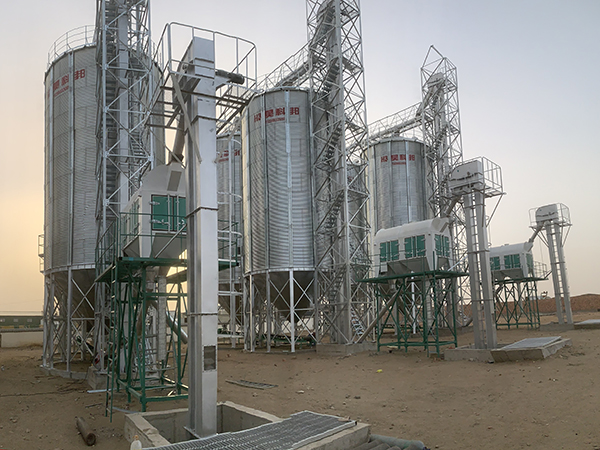Rapeseed storage silo installation process:refined management
The installation of rapeseed storage silos involves careful design considerations, key construction points, and subsequent maintenance strategies to ensure storage safety and efficiency. Key aspects include estimating storage capacity, environmental control, material selection, precise installation techniques, safety adherence, regular inspections, environmental monitoring, and professional training for maintenance personnel, aiming to extend the silo’s service life and maintain rapeseed quality.
- Main Advantages of Wheat Silo in Uganda
- Main Functions of Wheat Silo in Uganda
- Corn mill factory in Mali
- Maintenance Methods for Wheat Silo in Uganda
- Maintenance Methods for a Rice Silo in Uganda
- Wheat mill supplier in Malawi
- Installation Process of a Rice Silo in Uganda
- Structural Composition of a Rice Silo in Uganda
- Flour mill sale in Rwanda
- Main Advantages of Rice Silo in Uganda
- Primary Functions of Rice Silo in Uganda
- Grinding mill cost in Libya
As a crucial component of oil crops, the storage quality of rapeseed directly affects the output and quality of oil. A scientifically sound and rational rapeseed storage silo installation process is essential for ensuring storage safety and improving storage efficiency. This article will explore the installation process of rapeseed storage silos from various perspectives, including design considerations, key construction points, and subsequent maintenance strategies.
Design Considerations
In the rapeseed storage silo installation process, early design considerations are the foundation for building an efficient storage environment.


Estimation of Storage Capacity
Reasonably estimate the storage capacity based on the annual production and storage cycle of rapeseed. Proper storage capacity can prevent resource waste while ensuring storage needs are met in different seasons.
Environmental Control Design
Consider temperature and humidity control in the design to prevent rapeseed from becoming damp or spoiling during storage. Environmental control design can significantly extend the storage cycle of rapeseed and maintain its quality.
Balance of Ventilation and Airtightness
Balance ventilation and airtightness in the design to ensure the stability of the storage environment. A good ventilation system can reduce the respiration of rapeseed, while appropriate airtightness can prevent the impact of the external environment on the storage conditions.
Key Construction Points
Every key point in the construction process is related to the success of the rapeseed storage silo installation process.
Selection of Construction Materials
Choose suitable construction materials to ensure the durability and reliability of the silo. High-standard construction materials can improve the silo’s corrosion resistance and compressive strength, extending its service life.
Precise Execution of Installation Techniques
Strictly follow the design drawings and construction standards to execute installation techniques. Precise installation techniques can ensure the structural stability and functional integrity of the silo.
Strict Adherence to Safety Regulations
Strictly adhere to safety regulations during the construction process to ensure the safety of construction personnel. Regular safety training and on-site supervision ensure that safety measures are effectively implemented throughout the construction process.
Subsequent Maintenance Strategies
After the main installation process is completed, a reasonable subsequent maintenance strategy is crucial for extending the service life of the rapeseed storage silo.
Regular Inspection and Maintenance
Establish a regular inspection and maintenance plan to identify and resolve issues promptly. Regular inspections and maintenance can prevent potential problems and reduce unexpected losses.


Use of Environmental Monitoring Systems
Utilize environmental monitoring systems to monitor changes in the storage environment in real-time. Environmental monitoring systems can provide real-time feedback on temperature, humidity, and other data of the storage environment, offering a scientific basis for maintenance.
Training of Maintenance Personnel
Provide professional training for maintenance personnel to improve their maintenance skills and emergency response capabilities. Systematic training can ensure that maintenance personnel can accurately identify issues and take effective measures.







